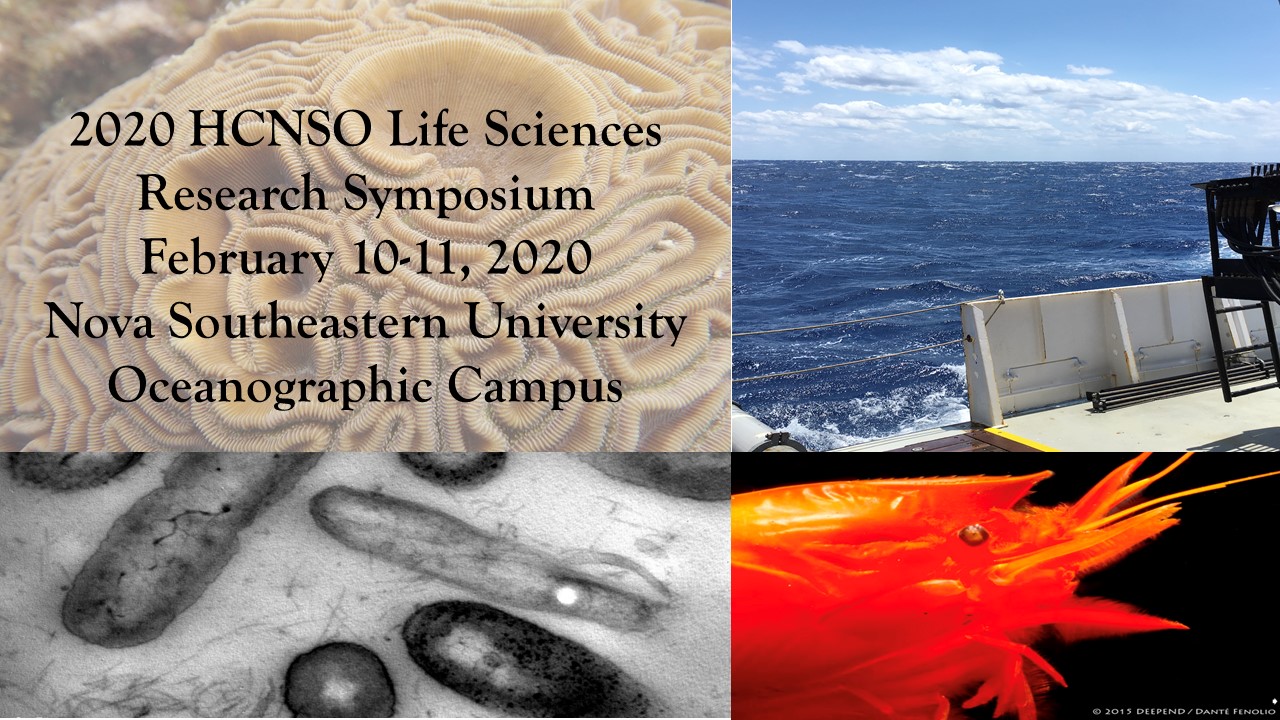The impact of physical disturbance and biofilm robustness on cooperative pyoverdine production in Pseudomonas aeruginosa
Location
HCNSO Guy Harvey Oceanographic Center Nova Southeastern University
Start
2-10-2020 2:45 PM
End
2-10-2020 3:00 PM
Type of Presentation
Oral Presentation
Abstract
Pseudomonas aeruginosa is a biofilm forming, pathogenic bacteria that can cause infections in humans with compromised immune systems (e.g. transplant patients, HIV positive individuals), and in individuals with cystic fibrosis. P. aeruginosa uses a critical siderophore called pyoverdine to drive the infection process. Expression and use of pyoverdine to facilitate growth is cooperative. Previous studies have demonstrated that by periodically perturbing the spatial structure of bacterial colonies, cooperation mediated by diffusible molecules such as pyoverdine can be manipulated. The overarching goal of this project is to use periodic spatial disturbance to disrupt cooperative pyoverdine in P. aeruginosa. We found that when P. aeruginosa forms robust biofilms, there is a small range over which pyoverdine production is decreased. Rationally decreasing the robustness of biofilm formation independent of growth rate increases the range of shaking frequencies over which pyoverdine production is decreased. These results contribute to our understanding of how perturbing the spatial structure of a population impacts their virulence and ability to cooperate. Moreover, our results may be used as a foundation upon which new tools to treat infections can be developed.
The impact of physical disturbance and biofilm robustness on cooperative pyoverdine production in Pseudomonas aeruginosa
HCNSO Guy Harvey Oceanographic Center Nova Southeastern University
Pseudomonas aeruginosa is a biofilm forming, pathogenic bacteria that can cause infections in humans with compromised immune systems (e.g. transplant patients, HIV positive individuals), and in individuals with cystic fibrosis. P. aeruginosa uses a critical siderophore called pyoverdine to drive the infection process. Expression and use of pyoverdine to facilitate growth is cooperative. Previous studies have demonstrated that by periodically perturbing the spatial structure of bacterial colonies, cooperation mediated by diffusible molecules such as pyoverdine can be manipulated. The overarching goal of this project is to use periodic spatial disturbance to disrupt cooperative pyoverdine in P. aeruginosa. We found that when P. aeruginosa forms robust biofilms, there is a small range over which pyoverdine production is decreased. Rationally decreasing the robustness of biofilm formation independent of growth rate increases the range of shaking frequencies over which pyoverdine production is decreased. These results contribute to our understanding of how perturbing the spatial structure of a population impacts their virulence and ability to cooperate. Moreover, our results may be used as a foundation upon which new tools to treat infections can be developed.


